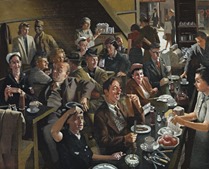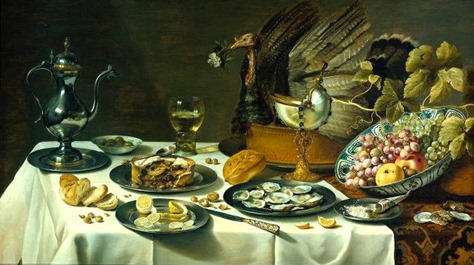The history of pizza begins in antiquity, when various ancient cultures produced flatbreads with toppings.
The word pizza was first documented in AD 997 in Gaeta and successively in different parts of Central and Southern Italy. The precursor of pizza was probably the focaccia, a flat bread known to the Romans as panis focacius, to which toppings were then added.
Modern pizza developed in Naples, when tomato was added to the focaccia in the late 18th century. However, pizza was mainly eaten in the country of Italy and by emigrants from there. This changed after World War II, when Allied troops stationed in Italy came to enjoy pizza along with other Italian foods.
Origins
Foods similar to pizza have been made since the neolithic age. Records of people adding other ingredients to bread to make it more flavorful can be found throughout ancient history.
 In Sardinia, French and Italian archaeologists have found bread baked over 7,000 years ago. According to Professor Philippe Marinval, the local islanders leavened this bread.
In Sardinia, French and Italian archaeologists have found bread baked over 7,000 years ago. According to Professor Philippe Marinval, the local islanders leavened this bread.
The Ancient Greeks had a flat bread called plakous (πλακοῦς, gen. πλακοῦντος—plakountos)which was flavored with toppings like herbs, onion, and garlic.
In the 6th century BC, the soldiers in Persian King Darius I armies baked flatbreads with cheese and dates on top of their battle shields.
 An early reference to a pizza-like food occurs in the Aeneid (ca. 19 BC), when Celaeno, queen of the Harpies, foretells that the Trojans would not find peace until they are forced by hunger to eat their tables (Book III). In Book VII, Aeneas and his men are served a meal that includes round cakes (like pita bread) topped with cooked vegetables. When they eat the bread, they realize that these are the “tables” prophesied by Celaeno.
An early reference to a pizza-like food occurs in the Aeneid (ca. 19 BC), when Celaeno, queen of the Harpies, foretells that the Trojans would not find peace until they are forced by hunger to eat their tables (Book III). In Book VII, Aeneas and his men are served a meal that includes round cakes (like pita bread) topped with cooked vegetables. When they eat the bread, they realize that these are the “tables” prophesied by Celaeno.
Some commentators have suggested that the origins of modern pizza can be traced to pizzarelle, which were kosher for Passover cookies eaten by Roman Jews after returning from the synagogue on that holiday, though some also trace its origins to other Italian paschal breads. Abba Eban has suggested that modern pizza “was first made more than 2000 years ago when Roman soldiers added cheese and olive oil to matzah”.
 Other examples of flatbreads that survive to this day from the ancient Mediterranean world are focaccia (which may date back as far as the ancient Etruscans); Mankoucheh in Lebanon, coca (which has sweet and savory varieties) from Catalonia; Valencia and the Balearic Islands; the Greek Pita; Lepinja in the Balkans; or Piadina in the Romagna part of Emilia-Romagna in Italy.
Other examples of flatbreads that survive to this day from the ancient Mediterranean world are focaccia (which may date back as far as the ancient Etruscans); Mankoucheh in Lebanon, coca (which has sweet and savory varieties) from Catalonia; Valencia and the Balearic Islands; the Greek Pita; Lepinja in the Balkans; or Piadina in the Romagna part of Emilia-Romagna in Italy.
Foods similar to flatbreads in other parts of the world include Chinese bing (a wheat flour-based Chinese food with a flattened or disk-like shape); the Indian paratha (in which fat is incorporated); the Central and South Asian naan (leavened) and roti (unleavened); the Sardinian carasau, spianata, guttiau, pistoccu; and Finnish rieska. Also worth noting is that throughout Europe there are many similar pies based on the idea of covering flat pastry with cheese, meat, vegetables and seasoning such as the Alsatian flammkuchen, German zwiebelkuchen, and French quiche.
 In 16th-century Naples, a galette flatbread was referred to as a pizza. Known as the dish for poor people, it was sold in the street and was not considered a kitchen recipe for a long time. This was later replaced by oil, tomatoes (after Europeans came into contact with the Americas) or fish. In 1843, Alexandre Dumas, père, described the diversity of pizza toppings. An often recounted story holds that on 11 June 1889, to honour the Queen consort of Italy, Margherita of Savoy, the Neapolitan pizzamaker Raffaele Esposito created the “Pizza Margherita”, a pizza garnished with tomatoes, mozzarella, and basil, to represent the national colours of Italy as on the Italian flag.
In 16th-century Naples, a galette flatbread was referred to as a pizza. Known as the dish for poor people, it was sold in the street and was not considered a kitchen recipe for a long time. This was later replaced by oil, tomatoes (after Europeans came into contact with the Americas) or fish. In 1843, Alexandre Dumas, père, described the diversity of pizza toppings. An often recounted story holds that on 11 June 1889, to honour the Queen consort of Italy, Margherita of Savoy, the Neapolitan pizzamaker Raffaele Esposito created the “Pizza Margherita”, a pizza garnished with tomatoes, mozzarella, and basil, to represent the national colours of Italy as on the Italian flag.
 Pizza is now a type of bread and tomato dish, often served with cheese. However, until the late nineteenth or early twentieth century, the dish was sweet, not savory, and earlier versions which were savory more resembled the flat breads now known as schiacciata.Pellegrino Artusi’s classic early-twentieth-century cookbook, La Scienza in cucina e l’Arte di mangiar bene gives three recipes for pizza, all of which are sweet. However, by 1927, Ada Boni’s collection of regional cooking includes a recipe using tomatoes and mozzarella.
Pizza is now a type of bread and tomato dish, often served with cheese. However, until the late nineteenth or early twentieth century, the dish was sweet, not savory, and earlier versions which were savory more resembled the flat breads now known as schiacciata.Pellegrino Artusi’s classic early-twentieth-century cookbook, La Scienza in cucina e l’Arte di mangiar bene gives three recipes for pizza, all of which are sweet. However, by 1927, Ada Boni’s collection of regional cooking includes a recipe using tomatoes and mozzarella.
Text from Wikipedia





































































